Potřebujeme váš souhlas k využití jednotlivých dat, aby se vám mimo jiné mohly ukazovat informace týkající se vašich zájmů. Souhlas udělíte kliknutím na tlačítko „OK“.
ASTM F1915-05(2012)
Standard Test Methods for Glazing for Detention Facilities
Automaticky přeložený název:
Standardní zkušební metody pro zasklení pro vězeňská zařízení
NORMA vydána dne 1.6.2012
Informace o normě:
Označení normy: ASTM F1915-05(2012)
Poznámka: NEPLATNÁ
Datum vydání normy: 1.6.2012
Kód zboží: NS-52069
Počet stran: 8
Přibližná hmotnost: 24 g (0.05 liber)
Země: Americká technická norma
Kategorie: Technické normy ASTM
Kategorie - podobné normy:
Anotace textu normy ASTM F1915-05(2012) :
Keywords:
attack weapons, battering ram, correctional facility, detention facility, fire, flame exposure, glazing, impact test, impactor (blunt and sharp), physical attack, polycarbonate, security glass, security glazing, security grades, temperature (cold and warm), test assembly, test criteria, time (element of), torch, ICS Number Code 91.060.50 (Doors and windows)
Doplňující informace
| Significance and Use | ||||||||||||||||
|
The predictable and reliable performance of detention glazing used in detention and correctional facilities is a major concern. These test methods aid in assigning a level of physical security to glazing used in window and door assemblies based upon objective tests which can be consistently duplicated. These test methods identify four security grades, corresponding to the four security grades established in Test Methods F1450. The intent is to establish a comparable level of performance for opening assemblies which incorporate detention glazing in conjunction with window and door assemblies. Test methods for detention glazing differ in sequencing a variety of attack tools and temperatures. These test methods evaluate the resistance of detention glazing to attacks using blunt and sharp impact devices and fire. These test methods evaluate the performance of glazing in hot and cold environments. These test methods do not provide a measure of the resistance or performance of glazing subjected to attack by ballistics, chemical agents, explosives or other extreme methods of attack. Where such elements are a factor, consult the manufacturer. The primary purpose of these test methods is to approximate the levels of abuse and operating conditions to which detention glazing is subjected in detention and correctional institutions. The desired result of these test methods is to provide a measure of assurance of protection to the correctional personnel, public, and inmates. Detention and correctional facility administrative staff are encouraged to provide adequate training, supervision, and preventative maintenance programs to enable detention glazing assemblies to function as intended. |
||||||||||||||||
| 1. Scope | ||||||||||||||||
|
1.1 These test methods, including a fire test response method, cover the apparatus, procedures, and acceptance conditions for evaluating the normal operational performance and the performance characteristics under assault conditions of detention glazing used in window and door assemblies in detention and correctional facilities; thus, these test methods only give an indication of the performance characteristics of detention glazing in actual service. Such variables as installation and maintenance conditions are not considered except as otherwise included in this test method. 1.2 It is the intent of these test methods to help ensure that detention glazing performs at or above minimum acceptable levels to restrict inmate passage to unauthorized areas, to confine inmates, to delay and frustrate escape attempts and to resist vandalism. 1.3 Tools defined in these test methods are representative of similar tools or materials, which may become available to inmates within the secure perimeter of detention and correctional facilities, and which could be used to inflict similar product damage. 1.4 These test methods should not be used to establish or confirm the absolute prevention of forced entries or exits. These test methods define five factors (tool, temperature, techniques, time, and number of impacts) used to determine resistance to defined attacks. 1.5 The values stated in inch-pound units are to be regarded as the standard. The SI values in stated parentheses are for information only. 1.6 In these test methods, the specimens are subjected to one or more specific sets of laboratory test conditions. If different test conditions are substituted or the end-use conditions are changed, it is not always possible by or from these test methods to predict changes in the physical attack, or fire-test-response characteristics measured, or both; therefore, the results are valid only for the physical attack, or fire-test-exposure conditions, or both, described in these test methods. 1.7 This standard does not purport to address all of the safety concerns, if any, associated with its use. It is the responsibility of the user of this standard to establish appropriate safety and health practices and determine the applicability of regulatory limitations prior to use. |
||||||||||||||||
| 2. Referenced Documents | ||||||||||||||||
|
Podobné normy:
Historická
1.4.2008
Historická
1.1.2014
Historická
1.4.2014
Historická
1.9.2008
Historická
1.9.2014
Historická
1.11.2009
Doporučujeme:
Aktualizace technických norem
Chcete mít jistotu, že používáte pouze platné technické normy?
Nabízíme Vám řešení, které Vám zajistí měsíční přehled o aktuálnosti norem, které používáte.
Chcete vědět více informací? Podívejte se na tuto stránku.


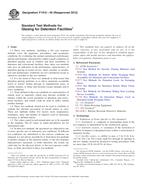
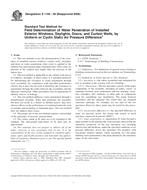 ASTM E1105-00(2008)..
ASTM E1105-00(2008)..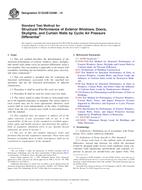 ASTM E1233/E1233M-14..
ASTM E1233/E1233M-14..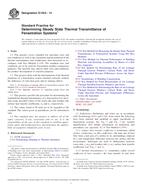 ASTM E1423-14
ASTM E1423-14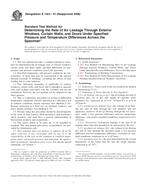 ASTM E1424-91(2008)..
ASTM E1424-91(2008)..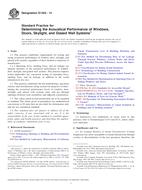 ASTM E1425-14
ASTM E1425-14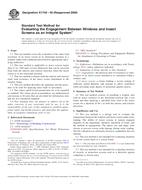 ASTM E1748-95(2009)..
ASTM E1748-95(2009)..
 Cookies
Cookies
